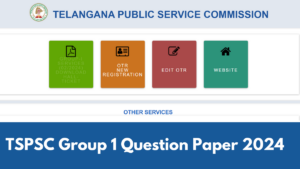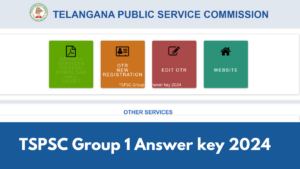Table of Contents
IndiaAI mission
News- Recently, the Cabinet has given its nod to the extensive IndiaAI mission, a national-level initiative.
About
- Objective: The IndiaAI mission aims to create a robust ecosystem for AI innovation, encouraging strategic initiatives and partnerships across both public and private sectors.
- Implementing Body: The mission will be executed by the ‘IndiaAI Independent Business Division (IBD) under the Digital India Corporation (DIC).
Key Components
- IndiaAI Compute Capacity- Establish a scalable AI computing ecosystem with 10,000+ GPUs through public-private partnerships, serving as a resource hub for AI innovation.
- IndiaAI Innovation Centre- Focus on developing and deploying indigenous Large Multimodal Models (LMMs) and sector-specific foundational models in critical areas.
- IndiaAI Datasets Platform- Create a unified platform for easy access to quality non-personal datasets, facilitating AI innovation among startups and researchers.
- IndiaAI Application Development Initiative- Encourage AI application development in vital sectors based on problem statements from various government departments and institutions.
- IndiaAI FutureSkills- Aim to lower entry barriers into AI education, expand AI-related courses at all levels of higher education, and establish Data and AI Labs in Tier 2 and Tier 3 cities.
- IndiaAI Startup Financing- Support deep-tech AI startups with easier access to funding, accelerating the development of advanced AI projects.
- Safe & Trusted AI- Focus on responsible AI implementation, including indigenous tool and framework development, innovator self-assessment checklists, and other governance frameworks.
Impact- The mission is designed to spur innovation, enhance domestic AI capabilities, and secure India’s technological independence.
Orans
News- Communities, especially in western Rajasthan, are expressing worries over the State’s plan to categorize orans (sacred groves) as assumed forests.
- About- Orans Definition: Traditional sacred groves in Rajasthan, serving as community-managed forests revered for their sacredness.
- Management and Preservation: Managed by rural communities through specific institutions and codes, highlighting their sacred status.
- Local Deities: Often associated with local deities, emphasizing their cultural and religious importance.
- Biodiversity: Rich in biodiversity, typically including a water source, and contributing to ecological balance.
- Community Conservation: Centuries-old community efforts have been focused on conserving Orans, linking community life closely with these groves.
- Usage: Utilized for livestock grazing, community gatherings, festivals, and social events, closely tied to agricultural cycles and environmental conservation commitment.
- Habitat for Great Indian Bustard (GIB): Provides a natural habitat for the critically endangered Great Indian Bustard, a protected species under the Wildlife Protection Act and the state bird of Rajasthan.
- Sacred Groves Concept: Relic forest patches are protected by communities in honor of a deity, acting as significant biodiversity reservoirs and shelters for various species.
- Distribution in India: Found across India, particularly in states like Maharashtra, Karnataka, Kerala, Tamil Nadu, and others, known by local names such as Kavu/Sarpa Kavu (Kerala), Devarakadu/Devkad (Karnataka), Deorai/Devrai (Maharashtra), Jahera/Thakuramma (Odisha).
Uttar Poorva Transformative Industrialization Scheme (UNNATI)
News- The Union Cabinet has given its approval for the Uttar Poorva Transformative Industrialization Scheme, 2024 (UNNATI – 2024).
About
- Objective: The scheme aims to foster industrial development and create jobs in the North East Region, focusing on manufacturing and services to boost economic activity and socio-economic development.
- Funding Structure: As a Central Sector Scheme, it involves two components: Part A with Rs. 9737 crores for incentives to eligible units, and Part B with Rs. 300 crores for implementation and institutional arrangements.
- Duration: Effective from the date of Notification until 31.03.2034, including 8 years of committed liabilities.
- Production Commencement: Eligible Industrial Units must start production or operation within 4 years of receiving registration.
- District Categorization: Districts are divided into Zone A (Industrially Advanced Districts) and Zone B (Industrially Backward Districts).
- Fund Allocation: 60% of Part A’s outlay is reserved for the 8 North Eastern states, with the remaining 40% allocated on a First-In-First-Out (FIFO) basis.
- Eligibility: Both new Industrial units and units undergoing expansion qualify for incentives.
- Implementation and Oversight: The Department for Promotion of Industry and Internal Trade (DPIIT) within the Ministry of Commerce and Industry will supervise the scheme.
- Monitoring Mechanisms: National and state-level committees, including a Steering Committee and State Level Committee, will ensure the scheme’s transparent implementation, overseeing registration and incentive claims.



 TSPSC Group 1 Question Paper 2024, Downl...
TSPSC Group 1 Question Paper 2024, Downl...
 TSPSC Group 1 Answer key 2024 Out, Downl...
TSPSC Group 1 Answer key 2024 Out, Downl...
 UPSC Prelims 2024 Question Paper, Downlo...
UPSC Prelims 2024 Question Paper, Downlo...





